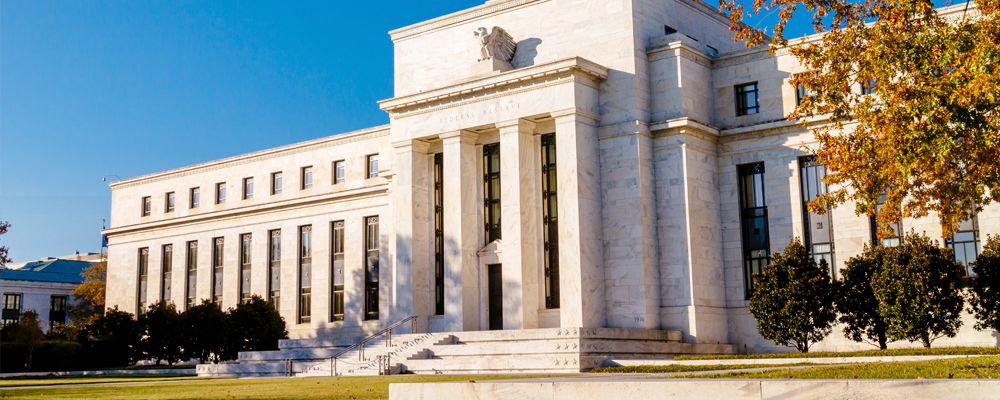Tuesday marked the anniversary of the bottom of the 2020 stock market crash.
- Tuesday, March 23, 2021
 Investors looking at their one-year portfolio returns may well be astonished to find double-digit return figures, ranging from around 15% for lower risk strategies to close to 50% for pure global equity portfolios. Global stock markets have returned impressive figures over the past 12 months. The S&P 500 is up 74.9%, Japan’s Nikkei 225 is up 72.7%, the Euro Stoxx 50 is up 54.3% and the UK’s FTSE 100 is up 34.4%. Alas, don’t expect a repeat over the coming months, as these exceptional annual return levels are purely due to the ‘base effect’. When improvements are measured from an exceptionally low point, the percentage increase is particularly pronounced. If we measure from the beginning of 2020, returns are in the much more sustainable range of 5 15%.
Investors looking at their one-year portfolio returns may well be astonished to find double-digit return figures, ranging from around 15% for lower risk strategies to close to 50% for pure global equity portfolios. Global stock markets have returned impressive figures over the past 12 months. The S&P 500 is up 74.9%, Japan’s Nikkei 225 is up 72.7%, the Euro Stoxx 50 is up 54.3% and the UK’s FTSE 100 is up 34.4%. Alas, don’t expect a repeat over the coming months, as these exceptional annual return levels are purely due to the ‘base effect’. When improvements are measured from an exceptionally low point, the percentage increase is particularly pronounced. If we measure from the beginning of 2020, returns are in the much more sustainable range of 5 15%.
With stock markets having already priced in a considerable amount of what recovery hopefully lies ahead, there’s – somewhat paradoxically – more to be anxious about. This is a period without real historical reference, and economic data affected by the very same base effect that investors experience for their investment returns creates considerable uncertainties and nervousness that has led to renewed volatility in capital markets. Over the next few months in particular, we can expect high annual economic growth rates, as well as higher reported inflation numbers, almost entirely as a result of the comparison to where we stood a year ago.
However, the concern over rising yields is both a risk for spoiling the expected recovery party and creating different winners and losers compared to last year. While this should not prove too much of an issue for holders of widely-diversified investment portfolios, those investors with more concentrated exposure to particular regions, industries or investment styles are experiencing a reversal of fortunes compared to last year.
Given how much sway yield levels and inflation concerns are having over market action right now, it is worth taking a snapshot of where we are, which still starts with a look at the state of the pandemic.
Globally, the COVID infection numbers are rising again, perhaps driven by a large increase in testing, perhaps because restrictions are being lifted with schools reopening in many places, perhaps driven by the new more contagious strains, perhaps because people everywhere are getting tired of being distanced.
In the US hospitalisations are declining sharply, and the ‘positive test’ numbers have stopped falling since schools went back and the testing capacity doubled. The American Rescue Plan Act is already putting money into the pockets of American consumers, which will boost consumption strongly. Consumer service spending could prove particularly strong with, for example, tourist resort hotels completely booked out in the coming weeks and months. As we have noted, the massive bump in US activity has dominated discussions about spill over effects into global growth, which has led to a sharp rise in long-term US bond yields, which has in turn dragged up yields elsewhere. Yet current activity data elsewhere in the world is no longer improving – just like the daily figures on the pandemic.
Case numbers are rising again in Europe and, unfortunately, this appears to be down to greater transmission rather than more testing. The vaccination pace has started to increase, and there is some good news in that the vaccines also appear to be reducing the overall impacts of catching the illness, while renewed lockdowns in Paris, Italy and elsewhere appears to have brought some stabilisation. Of course, that’s not a good story economically. The victory of vaccination is that lockdowns should not be necessary.
Meanwhile, Asia has also had some of its confidence shaken by what appears to be a small COVID resurgence. This is at a much lesser level than Europe, but has been enough to keep consumers from enjoying the oncoming spring.
The lower virus impact has led to the US$ regaining strength over the past month, against the Euro and the Yen, and against many emerging market currencies. This, in turn, has fed through to some central banks beginning to tighten policies, a year after the sharp virus-led cuts.
The financial conditions of a stronger dollar, higher US bond yields and policy tightening from some central banks have converged to take the edge off the very same global growth expectations that have been driving yields higher since the beginning of the year.
Interestingly, this probably means that US ten-year Treasury yields will struggle to go much higher than the 1.75% level seen briefly on Thursday. And, given that equity markets had been driven more by bond yield movements than growth expectations recently, it suggests a period of stabilisation in the recent tug of war between growth excitement, inflation fears and bond yields.

Chris Davies
Chartered Financial AdviserChris is a Chartered Independent Financial Adviser and leads the investment team.
About Estate Capital
Financial Services
Our Contacts
7 Uplands Crescent,
Swansea, South Wales,
SA2 0PA.
Tel: 01792 477763
